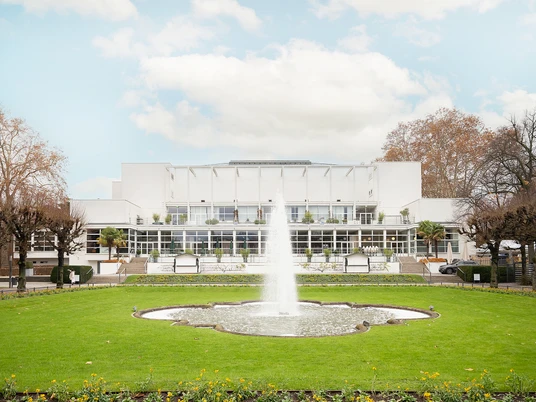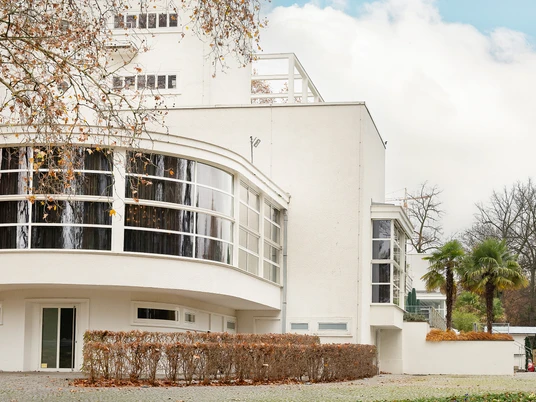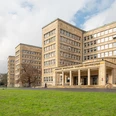When the historic ballroom from 1871 in the Palmengarten was to be extended in 1930, the city of Frankfurt took a bold step: it engaged the three main architects of the New Frankfurt – Martin Elsaesser (1884-1957), Ernst May (1886-1970) and Werner Hebebrand (1899-1966). The result was as simple as it was spectacular. In addition to purely practical concerns – such as modernizing the catering operations – the architects also modernized the social image of the complex without further ado.
Ernst May emphasized that the Palmengarten no longer only served a limited section of the population for recreation. It was now a "public recreation area" for broad sections of the population. In order to achieve this recreational effect in the building itself, the trio of architects brought the plants of the Palm Garden inside the building through almost floor-to-ceiling glass niches and also brought people out onto the large terrace. Walls and floors were kept as simple as possible; the plants were given the main role in this house. An approach that has remained unchanged since the restoration in 2009.
Ernst May emphasized that the Palmengarten no longer only served a limited section of the population for recreation. It was now a "public recreation area" for broad sections of the population. In order to achieve this recreational effect in the building itself, the trio of architects brought the plants of the Palm Garden inside the building through almost floor-to-ceiling glass niches and also brought people out onto the large terrace. Walls and floors were kept as simple as possible; the plants were given the main role in this house. An approach that has remained unchanged since the restoration in 2009.
Nearby






